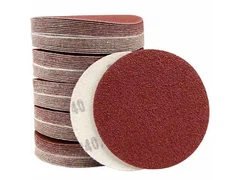What are the main differences between alumina and silicon carbide polishing abrasives?
Mar 17, 2025
Leave a message
Hardness and Wear Resistance:
The hardness of silicon carbide abrasive is higher than that of aluminum oxide abrasive. Its Mohs hardness can reach up to 9.4, which is only second to diamond. So it's more wear-resistant. This means silicon carbide abrasive can keep a better shape during grinding and is good for processing harder materials.
Though aluminum oxide abrasive is also quite hard, it's a bit softer compared to silicon carbide. Its Mohs hardness is about level 9. But still, aluminum oxide abrasive can show good wear resistance in high-speed, high-pressure and heavy-load grinding situations.
Grinding Efficiency:
Because silicon carbide abrasive is very hard, its grinding efficiency is relatively low. When a lot of material needs to be removed quickly, you might need to think about other abrasives or adjust the process parameters.
Aluminum oxide abrasive is relatively softer, but it can offer higher grinding efficiency. When you need to get a polishing effect quickly, aluminum oxide abrasive could be a better choice.
Price and Supply:
Silicon carbide abrasive is usually more expensive than aluminum oxide abrasive, and in some areas, it might be in short supply. This might be because the production process of silicon carbide abrasive is more complex and the cost of raw materials is higher.
Aluminum oxide abrasive is relatively cheaper and there's more of it available. So aluminum oxide abrasive has an advantage in applications where cost is a big concern.
Particle Size and Distribution:
The particle size of silicon carbide abrasive is usually larger and it can remove uneven surfaces quickly. But this might mean you need smaller abrasive particles in the fine polishing stage to get the ideal surface smoothness.
The particle size of aluminum oxide abrasive is finer and the particle distribution is more even. This makes aluminum oxide abrasive give a better surface quality in the fine polishing stage.
Chemical Stability and Corrosion Resistance:
Aluminum oxide abrasive is stable against acids, bases and some other chemicals. So it's suitable for use in corrosive environments. This makes aluminum oxide abrasive better when dealing with materials that are sensitive to corrosion.
Silicon carbide abrasive also has some chemical inertness, but it might be a bit less than aluminum oxide. But silicon carbide abrasive can still keep stable physical and chemical properties at high temperatures and is suitable for use in high-temperature environments.
Send Inquiry







